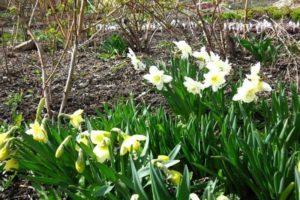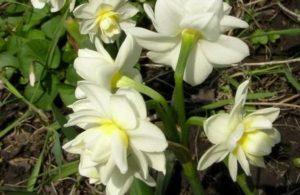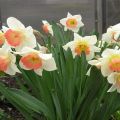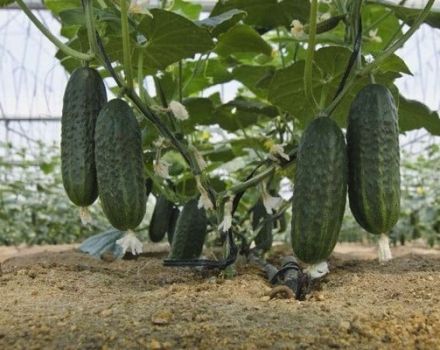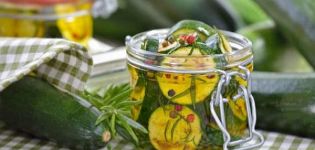Description and subtleties of growing a daffodil variety Pink Wonder
Daffodils have mesmerized with their beauty, variety of shapes and colors since ancient times. Thanks to the development of scientific breeding work, scientists delight with new improved varieties. Pink Wonder daffodil is a crop that is popular with many gardeners because of its tenderness and aroma. To grow such a plant in your flower bed, you should know the basic aspects of planting and growing an attractive flower.
Description and characteristics of Narcissus Pink wonder
In translation, the name of the variety means “pink miracle”. The flower enchants with the play of shades and the richness of the aroma. The crop belongs to the mid-late varieties, the peak of flowering occurs in April.
The plant has a strong sturdy pedicel reaching a height of 30 cm. The bud reaches no more than 10 cm in diameter and has a bright yellow tint in the first days of flowering. Then it acquires a peach tone, which eventually turns into a pale pink color. The maximum flowering time is 3 weeks.

Positive and negative sides
The positive qualities of Pink Wonder Narcissus include:
- resistance to low temperatures;
- attractive appearance;
- abundant flowering throughout the month;
- impressive bud size and plant height;
- the ability to use for cutting;
- undemanding care.
The variety has no obvious flaws.
Cultivation rules of the variety
When planting the Pink Wonder daffodil variety, it is worth considering several important points regarding the timing, preparation of planting material and the site, and also study the planting algorithm.

Landing dates
Daffodils belong to primroses, so they appear in the garden before anyone else. It is recommended to plant the plant in mid-August - early November. It all depends on the climatic conditions of the place of growth.
Preparation of planting material
Until planting, the bulbs should be stored in a room with a temperature of 17-20 degrees, which is well ventilated and protected from direct light rays.
Before planting the bulbs, inspect, sort out, disinfect in a solution of potassium permanganate.

Choosing a landing site
The plant grows well in lighted and ventilated areas with neutral loamy soil, therefore compost or humus should be applied. If the soil contains a large amount of alkali, dolomite flour should be added in the amount of 200 grams per 1 sq. m or wood ash no more than 1 glass per sq. m.
It is not recommended to plant in a flower bed where bulbous plants previously grew, as well as perennials - asters, chrysanthemums. Legumes, peonies, cereals, nightshades, and cucumbers are excellent precursors.
Important! You cannot use manure as fertilizer.
Landing technology
The landing algorithm includes the following steps:
- Prepare the site in advance by digging it up and enriching it with fertilizers as needed.
- Dig holes up to 12-15 cm deep at a distance of 15-20 cm from each other.
- Fill in the holes for 2 tbsp. l. wood ash, a small handful of sand and place the onion.
- Fill the depressions up to half with earth connected to the compost.
- Water abundantly, tamp and fill up the missing soil.
After planting, it is recommended to mulch with straw, sawdust or grass cuttings.

Further care of the plant
Narcissus Pink Wonder belongs to unpretentious cultures. In order for a plant to please for a long time with its beautiful flowering, you need to take into account the valuable recommendations of experienced gardeners.
Watering and feeding
Narcissus Pink Wonder is a moisture-loving plant, so you need to water it abundantly and regularly. For 1 sq. m requires more than 20 liters of water. After the procedure, loosen the soil and, if necessary, get rid of weeds.
As soon as the bulb begins to germinate, apply complex mineral fertilizers in the amount of 30 grams per 1 sq. m. The next feeding should be carried out during the formation of buds. To do this, add 20 grams of inorganic fertilizers per 1 sq. m. For long and lush growth, feeding should be repeated. The last application of the potassium-phosphorus mixture (1: 2) is carried out after flowering in the amount of 50-60 grams per 1 sq. m.

Formation of a variety
As the buds of the plant wither, they can be safely cut off, leaving foliage. In autumn, to preserve decorativeness, the tops can be cut in half, loosened and fertilized. When the plant is completely yellow, cut it as close to the soil as possible.
How to prepare for winter
To protect the plant from freezing, you need to carry out autumn mulching with peat or dry leaves. In this case, the layer of mulch should be at least 6-8 cm. In the spring, it can be removed by discarding it in the aisles during loosening.

Diseases and pests
The best prevention against diseases and harmful insects is compliance with all standards of agricultural cultivation. The Pink Wonder daffodil variety is susceptible to the following infections.
| Name | Symptoms | Control measures |
| Fusarium | The bottom of the bulb is affected, plaque appears, the foliage turns yellow | Cut the stalk to healthy tissues, soak the bulb in Fitosporin-M solution |
| Botrythiasis | Fluffy white bloom with black dots at the edges of the leaves, decay of shoots, buds | Remove affected fragments, treat with fungicides |
| Rust | The presence of colorless swellings on the foliage, stem, bulb, which eventually acquire an orange color. As a result, the leaves wither, and the plant becomes weak and does not please with flowering. | Dig up and destroy infected flowers, and treat unaffected flowers with Bordeaux mixture |
Among the dangerous pests, the Pink Wonder variety affects bears, nematodes, and daffodil flies. It is recommended to use broad spectrum insecticides to combat them.
Breeding a daffodil
Daffodils reproduce vegetatively. By the second year, the mother bulb can form more than 4 babies, which will be ready for separation and planting in the third year.

Use of Pink Wonder in landscape design
The Pink Wonder variety was bred specifically for cutting, as well as forcing and decorating plots and borders. Such a plant will add mystery and charm to any spring composition.Landscape designers advise planting Pink Wonder daffodils in small groups of 10 along the paths that lead to the garden, and the distance between them can be filled with solid flowers, for example, muscars, hyacinths.
